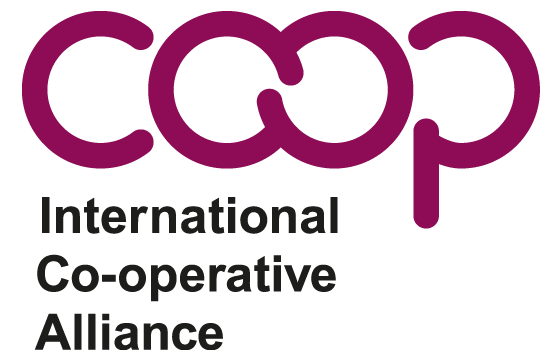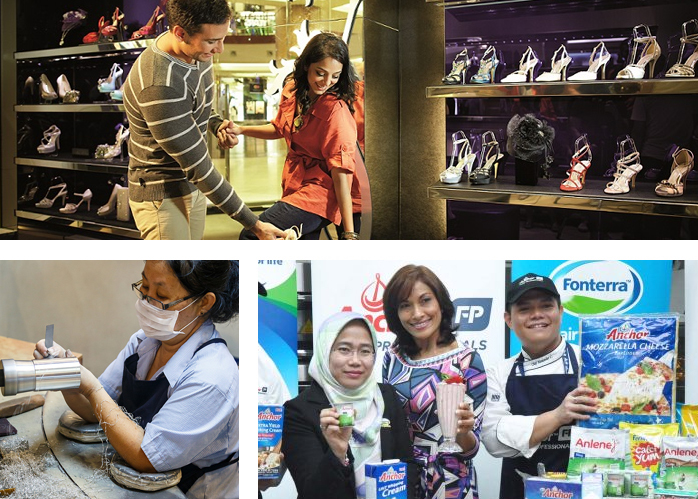“Selamat Datang” means Welcome to Malaysia
This land we call Malaysia today has been welcoming many travellers from around the world for centuries past, thanks to its location at the centre of the major trade route between East Asia and the West. Besides stock commodities and exotic goods, these travellers have brought with them multitude of customs and cultures for the locals to sample and savour, leading to a rich multicultural mix that endures to these modern times. Visitors to Malaysia can expect to experience a melting pot of customs and cultures comprising Malay, Chinese, Indian, Eurasian and indigenous traditions.
Because many Malaysians are generally at ease with multiculturalism, they are among the most tolerant and accepting people in the world with the innate ability to respect differences, to see common values and to celebrate diversity. Malaysians are a peace-loving people that are renowned for their hospitality towards visitors from around the world; and it is not surprising to find that an international language like English is widely used by the folks in Malaysia.
Malaysia’s vibrant economy is at the heart of the world’s largest economic growth region. Just one testimony to this is the investment of RM20m by New Zealand's dairy leader Fonterra Co-operative Group, in December 2016.
The Malaysian nation is a key trading partner within ASEAN (Association of Southeast Asian Nations), which has a total population of over 600 million. Along with neighbouring giants of India and China, this region of Asia is home to nearly half of the 7-billion-plus people in the world.
Since its establishment, ANGKASA, the Malaysian National Co-operative Movement, is the apex for the Malaysian co-operative movement. With the approval of the new co-operative Act in 1993, ANGKASA was formally recognized by the government of Malaysia to represent the co-operative movement nationally and internationally.
Geography
Geographically, Malaysia comprises two parts:
Peninsular Malaysia that extends from the south eastern corner of the Asian continent, bordering Thailand in the north and the island city-state of Singapore to the south; and:
The states of Sabah and Sarawak on the island of Borneo, which lies to the east of the peninsula, across the South China Sea.
Both regions have much to offer in terms of exciting places of go and interesting things to see: From the bustling metropolis of the capital, Kuala Lumpur, to the pristine white sandy beaches of the eastern coast of the peninsula; and further still to explore the lush tropical jungles of Borneo and to enjoy the cool crisp air atop Mount Kinabalu, the highest peak in South East Asia.
Let’s get to Kuala Lumpur
As the nation’s capital, Kuala Lumpur is the cultural, financial, education and economic centre of Malaysia and a prominent city in the South East Asian region. Visitors to this city of 1.6 million people can expect to see a kaleidoscope of fascinating sights and sounds that typifies a buzzing modern metropolis that is at the same time steeped in rich traditional culture and heritage. This stunning contrast is reflected in its architecture such as the imposing Petronas Twin Towers juxtaposed with the teeming colonial era buildings on the nearby streets below.
Kuala Lumpur is ideally suited as a destination of choice for meetings and conferences in Asia thanks to the ease in which these events can be staged here. The reasons for this include the multilingual capabilities of the city’s populace and its strategic location within the country and at the heart of the South East Asia. In addition, Kuala Lumpur offers world-class infrastructure for hosting events, which includes two major international air transportation hubs: The Kuala Lumpur International Airport (KLIA), and the budget-conscious KLIA2; as well as a comprehensive transportation network for interconnecting that include an efficient rail services to the major commercial centres in and around the capital city.
On top of that, there are many types of accommodation to be had, from luxurious 5-star hotels to dainty boutique guesthouses, all strategically located at renowned places of entertainment and dining such as Bangsar, KL Sentral and Bukit Bintang, thus catering to all sorts of preferences. Besides, being a city that celebrates multilingual, multicultural and mixed society means that the range of culinary delicacies to be savoured in Kuala Lumpur is unmatched by any other major cities in the world.
All things considered, Kuala Lumpur is probably the best place to stage meetings and conferences as the city offers the best value for money in terms of location, infrastructure, accommodation, and the diversity of entertainment and dining—a sentiment that is supported the World Economic Forum Travel & Tourism Competitive Report which in 2013 ranked Malaysia among the Top 5 most price competitive in the world.
Climate, people and languages
Malaysia experiences warm tropical weather all year round. Temperatures range from a low of 21°C (70°F) to a high of 32°C (90°F) with little variation throughout the year. Heavy rain showers are common but most often short in duration. Balmy evenings are ideal for outdoor dining, night markets and late night shopping.
Malaysia’s multicultural society makes it one of the most tolerant and accepting societies in the world. More so in the major urban centres like Kuala Lumpur, which are magnets for all manners of people and a melting pot of their respective cultures. Because of the respect Malaysians hold for each other’s differences, their ability to embrace another’s culture, and to see common values and celebrate diversity, Malaysia has in the course of just over half a century, developed into a peaceful, safe, stable and secure nation with a multifaceted society and a unified people that exemplify how multiculturalism can work successfully.
Malay or Bahasa Malaysia is the official language of the country and is used in all official communication with the Government and its agencies, as well as in official functions. Nevertheless, English is widely used and communicating in this language, whether spoken or in writing, with most Malaysians is quite easy and acceptable. Besides, a significant number of the populace is conversant in a multitude of Chinese and Indian dialects and languages such as Cantonese, Fuzhou, Hainanese, Hakka, Hindi, Hokkien, Malayalee, Mandarin, Punjabi and Tamil. It is interesting to note that there are actually up to 137 languages used throughout Malaysia, with most of them belonging to the indigenous tribes in the Borneo states of Sabah and Sarawak. Nevertheless, some 40 languages are spoken in Peninsular Malaysia alone.
Government and Businesses
The Malaysian Government’s Economic Transformation Programme recognises the MICE industry (meetings, incentives, conferences and exhibitions) as a key economic growth sector. As such, it is a major supporter in the attraction and hosting of major international conferences and events in the country. Malaysia’s strategic location and cost competitiveness have been identified as the main strengths to be leveraged and massive investments were made in developing its venues, transportation networks and technological infrastructure.
The efforts of the Government have resulted in Malaysia being recognised as among the top choice locations for events. According to the International Congress and Convention Association (ICCA), in 2015, Malaysia is ranked in the Top 10 in terms of numbers of events hosted in Asia and 32nd in the world. In fact, in 2016 ICCA itself chose to hold its 55th Congress in Kuching, the state capital of Sarawak in Bornean Malaysia.
Places of Interest
Kuala Lumpur – Garden City of Lights
Kuala Lumpur is also known as the “Garden City of Lights”. A short bus tour would unveil the reason the city gained that moniker as the soul and charm of the old and new Kuala Lumpur is laid bare for all to see. Setting off from the literal beginning of the city—right at the confluence of two old rivers — visitors will be driven through the old parts of the city, where colonial buildings stand in stark contrast to the gleaming skyscrapers in the background, to the modern districts and their shiny shopfronts. Places of interest along the way include the PETRONAS Twin Towers, King’s Palace, National Mosque, National Monument, handicraft centres and the Independence Square.
Malacca – The Historic State
As the oldest city in Malaysia, Malacca is one of the country’s most popular tourist destinations and is a UNESCO World Heritage Site. Its history dates back to the 14th century when it was the meeting point for traders plying the China-India trade routes. Having been colonised by the Portuguese, Dutch and the British, there’s an interesting infusion of influences that is evident in its eclectic architectural style. Among the historical sites to visit in Malacca are the A Famosa, the Stadthuys, Christ Church and Francis Xavier Church. A glimpse of how the Sultanate lived back in the day can be had at the museum built to replicate an old palace. These attractions are located within walking distance of one another.
Jonker Street is a treasure trove of antiques and ancient artefacts, an ideal place to shop for souvenirs. Some of Malacca’s delicacies can also be found there, such as the famous Chicken Rice Balls. Being just a short 90 minute drive from Kuala Lumpur, Malacca is an ideal destination for a day trip. However, with all its fascinating attractions, visitors to this historic city may want to stay just a little bit longer.
Penang – The Pearl of the Orient
Penang, a UNESCO World Heritage Site, is a fascinating blend of Malay, British, Indian and Chinese cultures, cuisines and architecture. Among the sights to be seen here is the Cheong Fatt Tze Mansion in George Town, once the home of a 19th century millionaire, which has been carefully restored and turned into a boutique hotel. Guided tours of the mansion are held daily where delegates will be able to experience life in 19th century Penang.
Langkawi – The Jewel of Kedah
Steeped in legend, Langkawi is a 99 island archipelago with numerous sandy beaches and natural attractions. A duty-free port, the scenic, tranquil island is a favourite destination for visitors, both local and international. In 2007, Langkawi was given World Geopark status by UNESCO with three main conservation areas: Machincang Cambrian Geoforest Park, Kilim Karst Geoforest Park and Dayang Bunting Marble Geoforest Park (Island of the Pregnant Maiden Lake). These three parks are the most popular tourism areas within the Langkawi Geopark. For some breath-taking views of Langkawi’s rainforest canopy, there are cable cars to take visitors up to the famous Langkawi Sky Bridge.
The island is also well known for its beaches. From the restaurants and bars of the picturesque Pantai Chenang to the peace and quiet of the tranquil Pantai Kok, there’s no shortage of beaches to enjoy some fun in the sun at Langkawi. Away from George Town, the tranquil beaches of Batu Ferringhi provide a relaxed location for delegates to soak up some sun or partake in water sports and spa treatments at any of the numerous deluxe resorts. Apart from the historical sites and beaches, Penang is also known as the food capital of Malaysia. A visit to any of the numerous hawker centres, the most popular one being on Gurney Drive, will give delegates a sample of various types of cuisines.
Sabah – The Land beneath the Wind
Sabah is richly blessed with natural diversity, unique indigenous cultures, exhilarating adventures, beautiful beaches and fantastic food. From mountain high to ocean deep, there’s no shortage of adventures in Sabah to excite delegates. Sabah takes pride in the mystical Mount Kinabalu, the highest peak in South East Asia, at 4,095.2 metres high. Designated as a World Heritage Site by UNESCO in 2000, Kinabalu National Park is a bio-diverse hotspot that is home to an astonishing array of plants. An ascent to Mount Kinabalu allows visitors to see some of the diverse plant life that Sabah has to offer, as well as witness a stunning sunrise from over 4000 metres up.
Sabah is also home to some of the best dive sites in the world. A 10-20 minute boat ride from Kota Kinabalu will take visitors to the marine park, a cluster of islands comprising Pulau Gaya, Pulau Sapi, Pulau Manukan, Pulau Mamutik and Pulau Sulug. Pulau Sipadan is one of the world’s most beautiful dive sites, ranked fifth in Lonely Planet’s top 10 dive sites list. It is located in the Celebes Sea and is formed by living corals growing on top of an extinct volcanic cone that took thousands of years to develop. Not only will visitors be enthralled by the sights and activities in Sabah, they’ll also be treated to unique Sabahan hospitality. For a taste of unique culture and tradition, as well as unique and adventurous activities, then Sabah is a must to visit.
Sarawak – The Land of the Hornbills
Sarawak is Malaysia’s largest state and as such, offers a variety of experiences, from underwater marine life, to rich cultural heritage as well as virgin rainforests and modern cityscapes. Sarawak is home to 28 indigenous groups, each with its own distinct language, culture and lifestyle. For a sample of the lifestyle of these tribes, visit the Sarawak Cultural Village, a living museum depicting the heritage of the major racial groups in Sarawak. Here, visitors can immerse themselves in true Sarawak culture and heritage.
The Gunung Mulu National Park, a UNESCO World Heritage Site, is the largest national park in Sarawak and is dominated by three mountains - Gunung Mulu, Gunung Api and Gunung Benarat. Mulu is dotted with swiftly flowing rivers, vertical cliffs and jungle streams. Its greatest attraction however is the approximate 300-kilometre stretch of snaking passages buried beneath the forested mountains. They’re home to the Sarawak Chamber, the largest cave chamber in the world, which could house 40 Boeing 747s. A visit to Sarawak entails a wonderful journey of discovery into its culture, heritage and history. From the peaceful sights of Kuching city to the awe of its historical museums, there are plenty of things to see and do.





